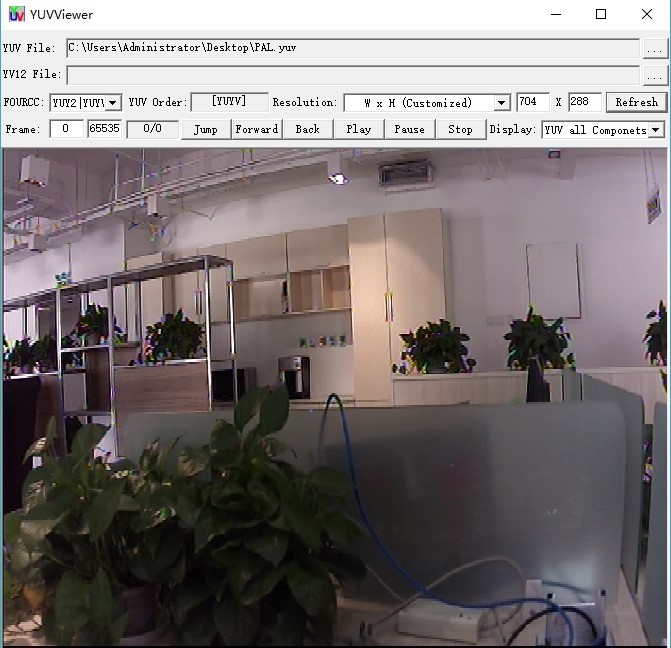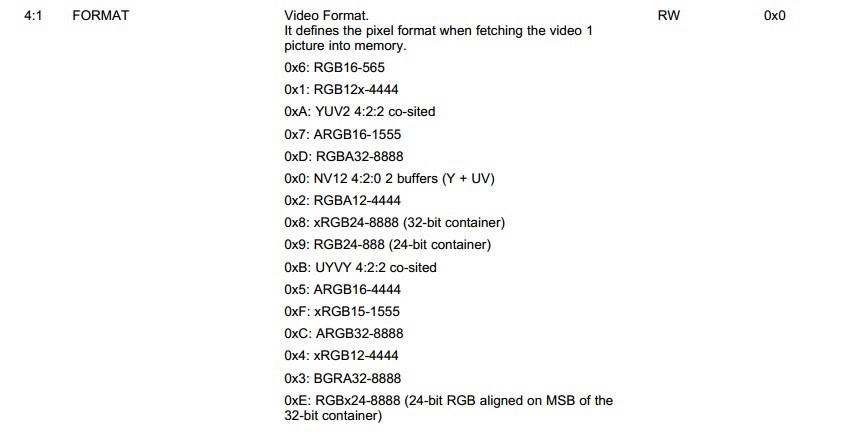Tool/software: Linux
Hi,
We are going to use ADV7343 for encoding 24-bit RGB out from LCD1 port to NSTC.
am5728 ==> 480i(SD) ==> adv7343 ==> NTSC
Here is my dts:
encoder0: display {
compatible = "adi,adv7343", "panel-dpi";
label = "lcd";
panel-timing {
clock-frequency = <27000000>;
hactive = <720>;
vactive = <480>;
hfront-porch = <4>;
hback-porch = <4>;
hsync-len = <130>;
vback-porch = <4>;
vfront-porch = <4>;
vsync-len = <40>;
hsync-active = <0>;
vsync-active = <0>;
de-active = <1>;
pixelclk-active = <1>;
};
port {
encoder_in: endpoint {
remote-endpoint = <&dpi_out>;
};
};
};
I've got some picture,but there's something wrong with the picture.
I checked the waveform with an oscilloscope.I got a waveform with 480p.I don't know how to configure the LCD1 in interlace mode.
My SDK is 3.0.0.4.
Regards
cxy







